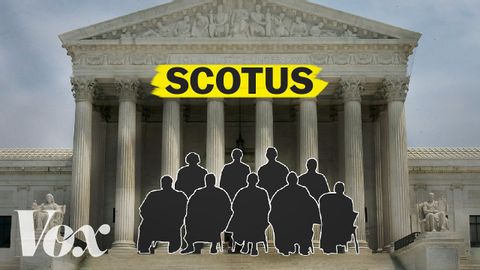
Subtitles & vocabulary
How a case gets to the US Supreme Court
00
Amy.Lin posted on 2017/10/29Save
Video vocabulary
conflict
US /ˈkɑnˌflɪkt/
・
UK /'kɒnflɪkt/
- Noun (Countable/Uncountable)
- Argument or struggle between two or more parties
- A serious disagreement or argument.
- Verb (Transitive/Intransitive)
- To have opposite ideas; to disagree; To not match
A2
More split
US /splɪt/
・
UK /splɪt/
- Adjective
- No longer married or in a relationship
- (Injured) by cutting it open, as in someone's lip
- Verb (Transitive/Intransitive)
- To become divided or broken along a straight line
- To cause a cut in (lip, etc.)
A2
More consume
US /kənˈsum/
・
UK /kən'sju:m/
- Transitive Verb
- To eat, drink, buy or use up something
- To take all your energy; focus the attention
A2TOEIC
More describe
US /dɪˈskraɪb/
・
UK /dɪ'skraɪb/
- Transitive Verb
- To tell the appearance, sound, smell of something
- To trace the outline of; to draw.
A1TOEIC
More Use Energy
Unlock All Vocabulary
Unlock pronunciation, explanations, and filters
